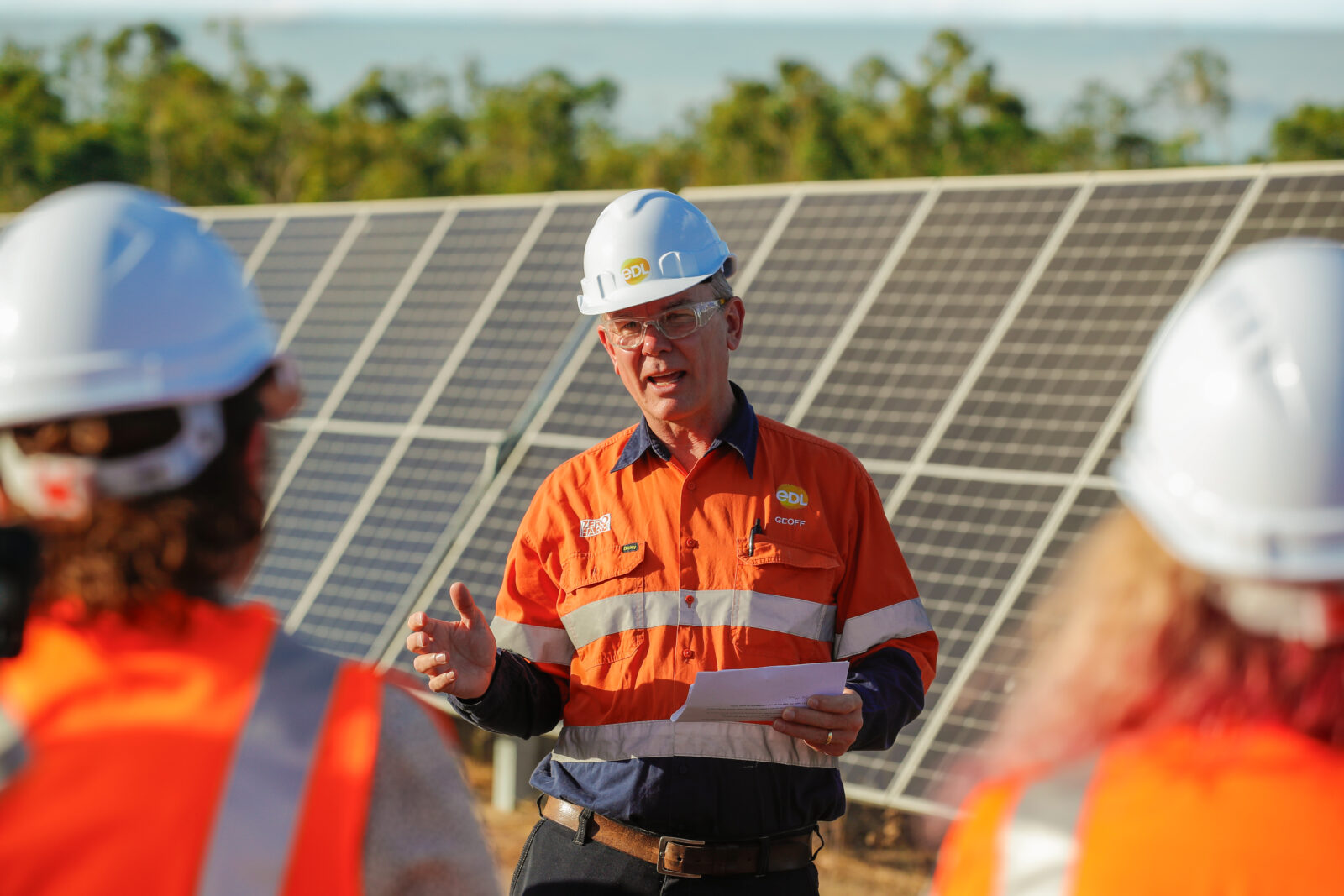Energy and Mines Australia Summit 2024
EDL’s General Manager for Remote Energy, Geoff Hobley, was a guest speaker at the Energy and Mines Australia Summit 2024, held on 7-8 May in Perth, Western Australia.
The theme for this year’s 8th Energy and Mines Australia Summit was ‘The Decarbonised Mine’, with energy companies and miners seeking to advance their focus from target setting to implementing pathways and solutions for emissions reduction and the transition to more renewable energy generation and storage.
EDL is one of the leading Independent Power Providers (IPP) in Australia, with expertise in development of hybrid renewable microgrids to decarbonize mining and remote community energy supply.
Prior to the summit, Geoff spoke with Energy & Mines about the carbon abatement drivers and the looming potential impacts for organisations that fail to heed the call to action quickly enough, as well as discussing the actions that can be taken to optimise renewable energy project development and keep timeframes on track.
Q. Energy and Mines: With the increasing focus on decarbonising industry, we often hear the term carbon abatement referred to. What does it mean, and when will it happen?
Carbon abatement is the curbing of greenhouse gas (GHG) emissions, with a particular focus on reducing carbon dioxide or equivalent (CO2-e) emissions as these make up 76% of global GHGs.
The Australian Government has legislated GHG reduction targets for 2030, with a plan to reach Net Zero carbon emissions by 2050 while adhering to an overall “carbon budget” of emission volumes for the period between 2021 and 2030.
The Safeguard Mechanism applies increasing emission reduction obligations on large emitters. Currently, Australia is not on track to meet the 2030 target which means additional measures may be required and could include increased obligations under the Safeguard Mechanism or expanding the scheme to smaller emitters.
For the mining industry to meet legislative requirements to significantly reduce carbon emissions, an urgent transition to alternative energy sources is required. Hybrid renewable power facilities are ideally placed to deliver significant carbon reduction to meet these requirements now, while also being capable of future expansion to accommodate mobile plant electrification to further reduce emissions.
Q. Energy and Mines: So what approach is EDL taking to decarbonising energy supply for mining operations?
The arguments around whether “net zero” is achievable and what it will cost are delaying action on reducing emissions. Companies like EDL are demonstrating today that significant emission reductions can be achieved by deploying hybrid renewable power solutions. Our Agnew Hybrid Renewable Microgrid that powers Gold Fields’ Agnew Gold Mine in Western Australia sees approximately 40,000 tonnes of CO2-e emissions avoided per year from the mine’s operations.
EDL is developing projects that will deliver over 80% of total energy to mine sites from renewable sources. We expect this “RE%” will increase naturally as prices for solar and batteries decrease, and we predict up to 95% RE will be achievable in coming years.
EDL is also working on a road map to 100% renewable power supply, delivered from a range of technologies. Whilst not practicable today, we have confidence that it will be achievable within the timeframes required to achieve “net zero” by 2050.
Q. Energy and Mines: Is there a gap between what is required to power mining operations and what current hybrid systems can deliver?
Mining companies are generally seeking the most economic supply of power for their projects and with the many factors influencing the economics of power supply, this will likely be a different solution for each project.
Hybrid power systems can deliver low emissions power supply to any mining operation. By acting promptly, mining companies can maximise the emissions reductions achieved, while minimising the cost of development.
It is important to understand that very significant emission reductions are achievable today – there is no need to wait for new technologies to deliver this. Current solutions can be designed to allow for future electrification of mobile plant and thereby further reduce emissions. For the mining sector, EDL believes the 2030 emissions reduction targets set by the government are achievable, but action must be taken now.
Q. Energy and Mines: How can customers and hybrid energy providers work together to keep projects on track and deliver carbon reduction targets within the required timeframes?
EDL is an Independent Power Producer (IPP). We work with customers to develop a solution to best suits their unique circumstances. EDL then owns and operates the facility to generate and supply power to the customer’s operation.
Optimizing renewable energy solutions is technically complex. There is a balance between the load that needs to be met; available resources; the capital cost of installing equipment on the ground and the ongoing operating cost.
The challenge we face is the urgency to act and cut carbon emissions. By partnering with an experienced IPP, mining customers achieve optimised solutions and streamline development timeframes. Minimising re-work and scope changes also reduces costs and time required to develop a new project. By taking these actions, emissions reductions will be achieved sooner and at lower cost.

